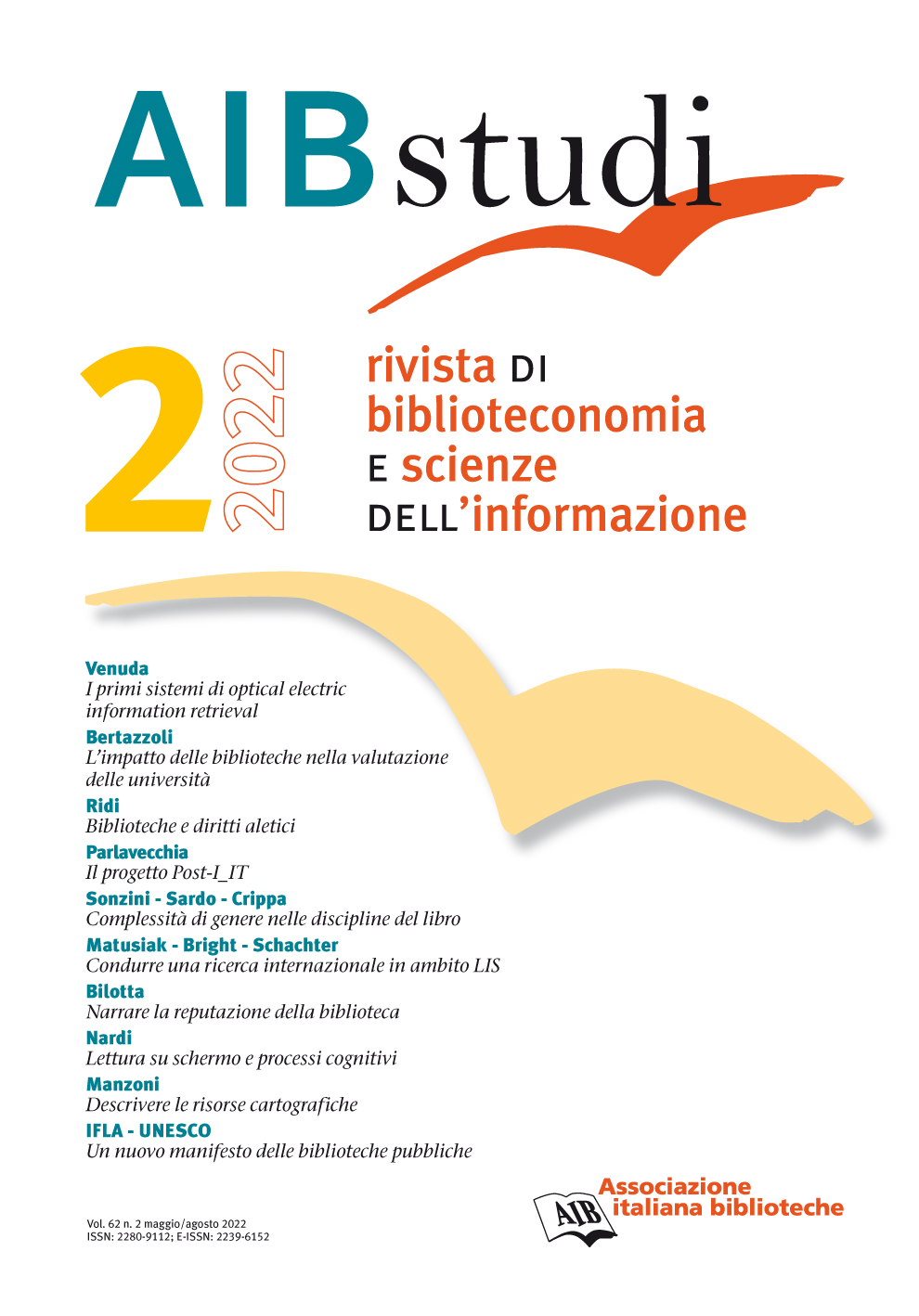The challenge of the exponential growth of collections in research libraries: the first optical electric information retrieval systems
DOI:
https://doi.org/10.2426/aibstudi-13750Keywords:
research libraries, United States of America, information retrievalAbstract
Since the end of the nineteenth century in U.S. libraries and research centers there has been a growth in book collections that, in 1944, is calculated as exponential. Growth that undergoes a sharp increase after World War II, noting, at the same time, a high rate of overlap between collections, which reduces the total holdings to about two-thirds of the world's published holdings. Using the technology of the time, based essentially on procedures for microfilming documents, proposals for deduplicating collections and reducing the amount of space occupied on the shelf are being developed from a lot of quarters, while electrical, or electronic, devices are being designed and, at times, realized combining the optical element, microfilms, with information retrieval techniques to achieve information discovery integrated with document retrieval. It was actually a series of devices based on the same operating principles, such as electrical photocells, microfilm and high-speed photography, invented, reinvented and reengineered, from which some prototypes were created, until, completely rethought by another inventor, one went into production and was successfully and commercially used. Some of the figures who gravitated around these devices have either remained in the shadows or have been forgotten: this paper, beyond documenting a pioneering period that was very significant for librarianship and for the developments of future information retrieval systems, aims at representing the importance and the role that these people played.
Downloads
Downloads
Published
How to Cite
Issue
Section
License
Copyright (c) 2022 Fabio Venuda

This work is licensed under a Creative Commons Attribution-ShareAlike 4.0 International License.









